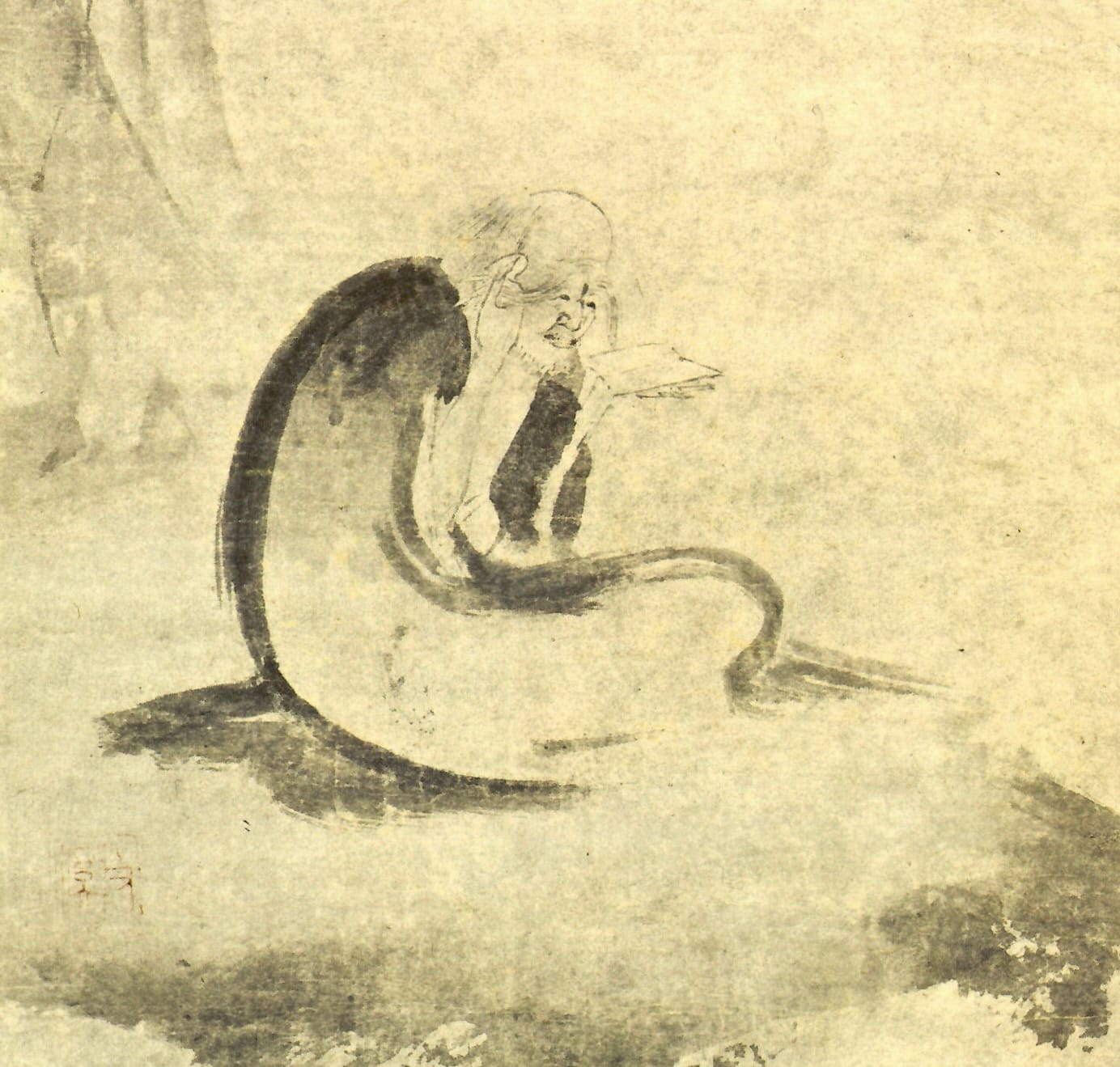More Is Less: How To Shut Up And See Deeply
If you want to deeply delight in the buddhadharma, if you want to go beyond stages, break through mu, and practice wisdom-samadhi throughout the day, the first thing you gotta do is sit down and shut up.

I'm a practical guy focused on helping serious Zen students wake up and get on with the vital work of post-awakening training. And, I'm an old duck and don't have that much time left, so I try not to put any energy into activities that might only indirectly lead to the above. No Zen movie nights for serious Zen students. Just get to it.
Fortunately, my teaching (and life) partner, Tetsugan Sensei, feels the same way. As do the students in our training group here at Vine of Obstacles Zen.
If you want to deeply delight in the buddhadharma, break through mu, go beyond stages, and practice wisdom-samadhi throughout the day, the first thing you gotta do is sit down and shut up. Blathering on in your mind about the buddhadharma is not only nauseating, it's an utter waste of your life.
In the broader tradition of the buddhadharma, we call "sitting down and shutting up" by many names (influenced by the various languages the dharma has travelled through) that are near synonyms – dhyana, zen, absorption, concentration, fixed sitting, and samadhi. And although nowadays you will find Zen teachers who don't agree that samadhi is a precondition for awakening, and who even say that awakening is not important, you won't find any of the great masters in the classical period who said that you can awaken without samadhi or that awakening is not important. What one finds in the classical record is practitioner after practitioner who busted their asses to sit down, shut up, and wake up. Risking and even sacrificing their lives for this one purpose. Even the Buddha sat under the Bodhi tree for seven days – after seven years of intensively cultivating of samadhi.
Even students who aren't directly taught appropriate methods of entering samadhi may well stumble into samadhi during sesshin. Often this comes when they just get exhausted from going through cycle after cycle of thinking and concluded thoughts (see below for more on this distinction). Such students – without appropriate methods – then struggle to maintain any semblance of samadhi in daily life practice. But establishing samadhi in daily life – on and off the zafu – is also a challenging task for students who have been offered appropriate methods. Therefore, one of Tetsugan Sensei and my teaching focuses is to offer particular methods that support householders in maintaining samadhi through the day and through their lives.
Fortunately, samadhi is a skill that most can learn. It just requires the proper motivation, receiving instruction in effective methods, and following-through with putting the methods into practice with diligence.
I recently shared a powerful method for entering samadhi – Zhiyi's four features of thought – and in this post, I will briefly review that method and then highlight the aspect that recent evidence points to as most crucial. Here's the original post:

If you're interested in the more general stages in the process of development through the buddhadharma, you might also look at this:

What are the four features?
- "'pre-thought' refers to the thought before it has arisen in relationship to objects;
- 'imminent thought' refers to the thought as it is about to arise in relation to objects;
- 'the thought itself' refers to the completed dwelling of the thought in relation to objects;
- 'concluded thought' refers to the thought in its relation to objects coming to a full completion and end, and fading into extinction." (V3 1767)
The above is from the great master Zhiyi.
Applying these now: how to do it?
First, sit zazen a lot. A consistent two-hours a day, with as many sesshin/retreat days as you can, is a good baseline for samadhi development with the four features.
Second, clearly understand the four features of thought.
Third, sit down and see what comes up. If you come to your senses only after you've gone way down the mind road and the thought you've been involved with has just dropped dead, then with a clear and gentle presence, note, "concluded thought." Then return to your practice whether that is counting the breath, following the breath, or being a keyword like mu. Don't waste time thinking discursively about the content of thought. Just see the process, note it, and move on. For more on these methods, see this:

When you get lost in thought just for a moment and the thought is still in motion, note with a clear and gentle presence, "thought." And return to your practice.
If you are sitting quietly, and the mind just subtly begins to quiver with a thought just about to bloom, note "imminent thought."
If you let go of imminent thought, you've succeeded at harmonizing, truing (like a wheel), and establishing, then note "pre-thought." This is the time for continued vigilance. Samadhi is probably not yet stable, and it's always just now. There is no good reason to get excited about it – that just blooms into thinking – or conceited (another form of thought positioning). Simply note it and let go.
The spirit and function of this practice is contrary to what seems like an innate human tendency to wander down the mind road. If it is indeed innate, then a good deal of compassion for yourself and others lost in thought is certainly called for. However, given our great good fortune, we can turn the light around and walk upstream to the source. Thus, working with the four features of thought is training the mind to focus and quiet. It's also about intimacy with the process of thought, shifting our focus and energy from being addicted to the content of thought.
The purpose of the focus on process is to harmonize, true the mind, and establish samadhi. These are the three factors of samadhi taught in the sutras and highlighted by Zhiyi.
What is most crucial about the method?
During our discussions about our students' work during the recently concluded sesshin, Tetsugan Sensei and I noted a couple things about this process. First, some students are not accurate reporters of which of the features of thought is present, often confusing imminent thought for pre-thought, and subtle thinking for imminent thought. Often our own visceral sense of where a student was at was more reliable than their reporting.
For koan work, there are "checking questions," and we're considering some "samadhi checking questions," but in the meantime, we're continuing to push our students to vividly clarify their embodied sense of the four features – especially pre-thought and imminent thought. What do pre-thought and imminent thought actually feel like in the body? Such awareness then provides a key to accurately assessing one's temporary feature. It actually takes quite a calm mind to get a clear bead on imminent thought – and that's one of the reasons so much zazen and careful application of this method are necessary for most of us.
In this regard, another major recent learning is how imminent thought is the fulcrum, the powerful pivot point, through which a practitioner can easily turn into samadhi in zazen and in daily life – or turn into wandering down the mind road. That is, imminent thought is the moment where we either go down the mind road, again, or turn the light around and dissolve into pre-thought.
To close, here's Xuance, a successor of the Sixth Ancestor, on samadhi:
Thank you for reading. If you enjoyed and/or benefited from this post, I encourage you to become a paid subscriber and support our work.
If you are already a paid subscriber - thank you! I look forward to your questions and comments about this post.



